Chapter 5: Ordering and accounting for inventory
Chapter learning objectives
Upon completion of this chapter you will be able to:
- describe the different procedures and documents necessary for the ordering, receiving and issuing of materials from inventory
- interpret the entries and balances in the material inventory account
- describe the control procedures used to monitor physical and 'book' inventory and to minimise discrepancies and losses.
- calculate the value of closing inventory and material issues using LIFO, FIFO and average methods.
1 Accounting procedures for ordering and issuing inventory
Accounting and control procedures for ordering and issuing inventory include the following functions:
- ordering
- purchasing
- receiving
- issuing
- storing and stocktaking.
Ordering, purchasing and receiving inventory
The procedures for ordering, purchasing and receiving materials are as follows.

 The purchasing procedure
The purchasing procedure
- When a department requires new materials, a purchase requisition is completed (including authorisation by the relevant manager) and sent to the purchasing department.
- On receipt of a properly authorised requisition, the purchasing department will select a supplier and create an order on a purchase order form.
- The purchase order form is sent to the supplier and copies are also sent to the accounts department and the goods receiving department.
- On receipt of the goods, the goods receiving department will check the goods against the relevant purchase order, and check the delivery note which accompanies the goods. Full details of the goods are then entered onto a goods received note (GRN).
- A copy of the GRN is attached to the relevant purchase order and they are both sent to the purchasing department where they are matched to the relevant supplier's purchase invoice. Once approved, the purchase invoice can be paid.

Specimen forms for the ordering, purchasing and receipt of inventory are shown in the illustration below.
Issuing inventory
The accounting procedures for issuing inventory are as follows.
- Materials requisition notes are issued to production departments. Their purpose is to authorise the storekeeper to release the goods which have been requisitioned and to update the stores records.
- Materials returned notes are used to record any unused materials which are returned to stores. They are also used to update the stores records.
- Materials transfer notes document the transfer of materials from one production department to another. They are also used to update the stores records.

 Illustration 1 – Accounting procedures for ordering and issuing inventory
Illustration 1 – Accounting procedures for ordering and issuing inventory
Some specimen documents that are used in the ordering, receiving and issuing of inventory are illustrated as follows.


 Test your understanding 1
Test your understanding 1
A goods received note (GRN) provides (tick all that apply):



 Test your understanding 2
Test your understanding 2
The following documents are used within a cost accounting system:
(i) invoice from supplier
(ii) purchase order
(iii) purchase requisition
(iv) stores requisition
Which TWO of the documents are matched with the goods received note in the buying process?
A (i) and (ii)
B (i) and (iv)
C (ii) and (iii)
D (iii) and (iv)


 Test your understanding 3
Test your understanding 3
The following documents are used in accounting for raw materials:
(i) Goods received note
(ii) Materials returned note
(iii) Materials requisition note
(iv) Delivery note
Which of the documents may be used to update stores ledger cards for inventory?
A (i) and (ii)
B (i) and (iv)
C (ii) only
D (ii) and (iii)

2 Inventory valuation
 Inventory valuation is important for:
Inventory valuation is important for:
- Financial reporting
- (lower of cost and net realisable value)
- Costing
- e.g. to calculate a mark-up and hence a sales price or to charge a job an appropriate amount for cost units consumed.
- To charge units of inventory at appropriate amount to cost of production or cost of sales, the business will consistently use an appropriate basis:
- FIFO (First In First Out) basis.
- LIFO (Last In First Out) basis.
- AVCO or WACO (Weighted Average Cost) basis.
- All will be illustrated using following information.

 Illustration 2 – Inventory valuation
Illustration 2 – Inventory valuation
M Ltd had the following material transactions during the first week in March.


FIFO
- Assumes that materials are issued out of inventory in the order in which they were delivered into inventory.
- Appropriate for many businesses (e.g. retailer selling fresh food using sell-by date rotation techniques).

 Illustration 3 – FIFO inventory valuation
Illustration 3 – FIFO inventory valuation

- Closing inventory valuation = 20 units @ $2.30 = $46
- Closing inventory valuation = Opening inventory + receipts – issues
= $20 + ($154 + $115) – ($86 + $157) = $46

Features of FIFO
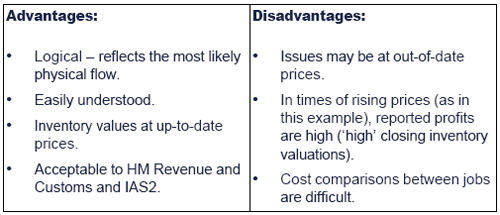
LIFO
- Assumes that materials are issued out of inventory in the reverse order to which they were delivered. Uncommon – appropriate for a few businesses
- e.g. a coal merchant who stores coal inventories in a large 'bin'.

 Illustration 4 – LIFO inventory valuation
Illustration 4 – LIFO inventory valuation
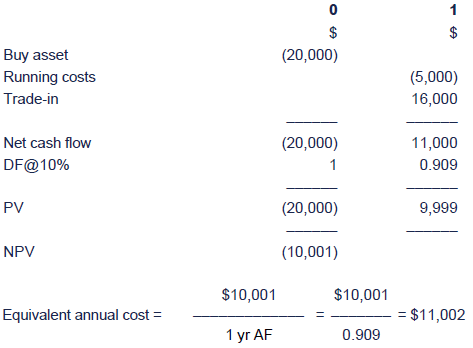
- Closing Inventory valuation = 10 units @ $2.00 + 10 units @ $2.20 = $42
- Closing inventory valuation = Opening inventory + receipts - issues
$20 + ($154 + $115) - ($88 + $159) = $42

Features of LIFO
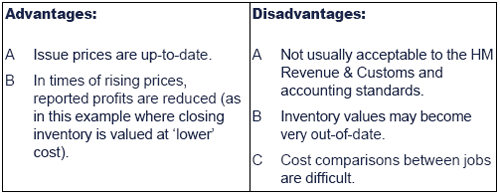
Cumulative Weighted Average
- All issues and inventory are valued at average price.
- The average price is recalculated after each receipt.

- Could be appropriate for businesses such as oil merchant, where deliveries in are fully mixed in with existing inventory.

 Illustration 5 – Cumulative weighted average inventory valuation
Illustration 5 – Cumulative weighted average inventory valuation
Cumulative Weighted Average
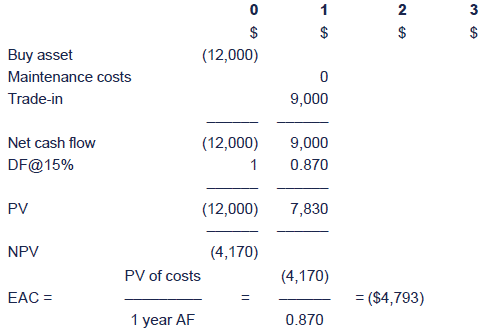
- Cumulative weighted average price after 2nd March delivery
= ($20 + $154) / (10 + 70) = $174 / 80 = $2.175 per unit
- Closing Inventory valuation = $44.92
- Closing inventory valuation = Opening inventory + receipts – issues
= $20 + ($154 + $115) – ($87 + $157.08) = $44.92

Features of Cumulative Weighted Average

The following information relates to TYUs 4 to 7.
A business had opening inventory of 300 units valued at $4.50 perunit on 1 May. The following receipts and issues were recorded in May:
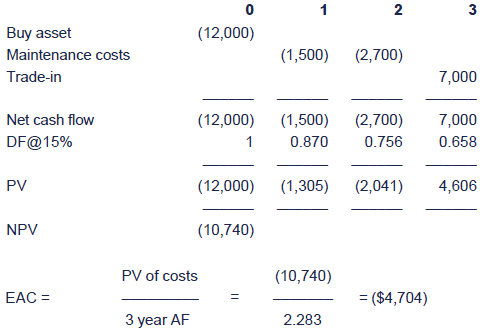

 Test your understanding 4
Test your understanding 4
What is the value of issues during the month using the FIFO method?
A $4,750
B $5,000
C $5,030
D $5,080


 Test your understanding 5
Test your understanding 5
What is the value of issues during the month using the LIFO method?
A $4,750
B $5,000
C $5,030
D $5,070


 Test your understanding 6
Test your understanding 6
What is the value of closing inventory?



 Test your understanding 7
Test your understanding 7
What is the value of closing inventory using the weighted average cost method?
A $1,180
B $1,232
C $1,250
D $1,282

3 Accounting for inventory – the material inventory account
Material inventory account
Materials held in store are an asset and are recorded in the balance sheet of a company.
Accounting transactions relating to materials are recorded in the material inventory account.


 Illustration 6 – Accounting for inventory
Illustration 6 – Accounting for inventory

(1) The opening balance of materialsheld in inventory at the beginning of a period is shown as a debit inthe material inventory account.
(2) Materials purchased on credit are debited to the material inventory account.
(3) Materials returned to stores cause inventory to increase and so are debited to the material inventory account.
(4) Direct materials used in production are transferred to the work-in-progress account by crediting the material inventory account.
(5) Materials returned to supplierscause inventory levels to fall and are therefore 'credited out' of thematerial inventory account.
(6) Indirect materials are not a direct cost of manufacture and are treated as overheads. They are therefore transferred to the production overhead account by way of a credit to the material inventory account.
(7) Any material write-offs are'credited out' of the material inventory account and transferred to theincome statement where they are written off.
(8) The balancing figure on the materialinventory account is the closing balance of material inventory at theend of a period. It is also the opening balance at the beginning of thenext period.


 Test your understanding 8
Test your understanding 8
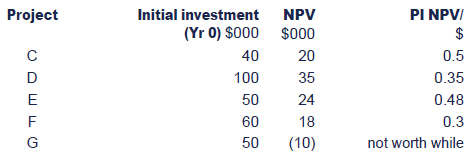

4 Physical inventory and book inventory
Perpetual inventory
Perpetual inventory is the recording as they occur of receipts,issues and the resulting balances of individual items of inventory ineither quantity or quantity and value.
- Inventory records are updated using stores ledger cards and bin cards.
- Bin cards also show a record of receipts, issues and balances of the quantity of an item of inventory handled by stores.
- As with the stores ledger card, bin cards will show materials received (from purchases and returns) and issued (from requisitions).
- A typical stores ledger card is shown below.
Stocktaking
The process of stocktaking involves checking the physical quantityof inventory held on a certain date and then checking this balanceagainst the balances on the stores ledger (record) cards or bin cards.Stocktaking can be carried out on a periodic basis or a continuous basis.
- Periodic stocktaking involves checking the balance of every item of inventory on the same date, usually at the end of an accounting period.
- Continuous stocktaking involves counting and valuing selected items of inventory on a rotating basis. Specialist teams count and check certain items of inventory on each day. Each item is checked at least once a year with valuable items being checked more frequently.
- Any differences (or discrepancies) which arise between 'book' inventory and physical inventory must be investigated.
- In theory any differences, as recorded in the stores ledger or the bin card, must have arisen through faulty recording.
- Once the discrepancy has been identified, the stores ledger card is adjusted in order that it reflects the true physical inventory count.
- Any items which are identified as being slow-moving or obsolete should be brought to the attention of management as soon as possible.
- Management will then decide whether these items should be disposed of and written off to the income statement.
- Slow-moving items are those inventory items which take a long time to be used up.
- Obsolete items are those items of inventory which have become out of date and are no longer required.

 Inventory losses and waste
Inventory losses and waste
Inventory losses and waste
- Inventory losses may be quantified by comparing the physical quantity of an item held with the balance quantity recorded on the bin card and/or stores ledger card.
- There are two categories of loss: those which occur because of theft, pilferage, damage or similar means and those which occur because of the breaking of bulk receipts into smaller quantities.
- It is the second of these which are more commonly referred to as waste.
- Inventory losses must be written off against profits as soon as they occur. If the value to be written off is significant then an investigation should be made of the cause.
- When waste occurs as a result of breaking up bulk receipts, it is reasonable to expect that the extent of such wastage could be estimated in advance based upon past records. Either of two accounting treatments could then be used:
- Issues continue to be made and priced without any adjustment and the difference at the end of the period is written off.
- Alternatively, the issue price is increased to compensate for the expected waste.
- Suppose that a 100 metre length of copper is bought for $99. The estimated loss caused by cutting into shorter lengths as required is 1%.
- The issue price could be based on the expected issues of 99 metres, i.e. $1 per metre rather than pricing the copper at:


Control procedures to minimise discrepancies and losses
The level of investment in inventory and the labour costs ofhandling and recording/controlling them is considerable in manyorganisations. It is for this reason that organisations must havecontrol procedures in place in order to minimise discrepancies andlosses.
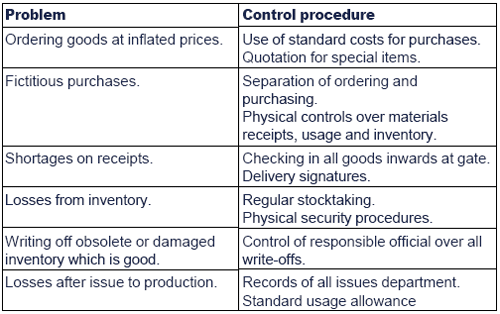
5 Chapter summary
Test your understanding answers

 Test your understanding 1
Test your understanding 1


 Test your understanding 2
Test your understanding 2
A


 Test your understanding 3
Test your understanding 3
A – the goods received note would be used rather than the delivery note in case the delivery note is wrong.


 Test your understanding 4
Test your understanding 4
B



 Test your understanding 5
Test your understanding 5
D



 Test your understanding 6
Test your understanding 6
B
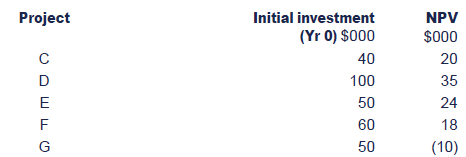


 Test your understanding 7
Test your understanding 7
B



 Test your understanding 8
Test your understanding 8


|
Created at 5/24/2012 5:06 PM by System Account
(GMT) Greenwich Mean Time : Dublin, Edinburgh, Lisbon, London
|
Last modified at 5/25/2012 12:53 PM by System Account
(GMT) Greenwich Mean Time : Dublin, Edinburgh, Lisbon, London
|
|
|
|
 |
Rating
:
|
 Ratings & Comments
(Click the stars to rate the page) Ratings & Comments
(Click the stars to rate the page)
|
 |
Tags:
|
|
|
|
|